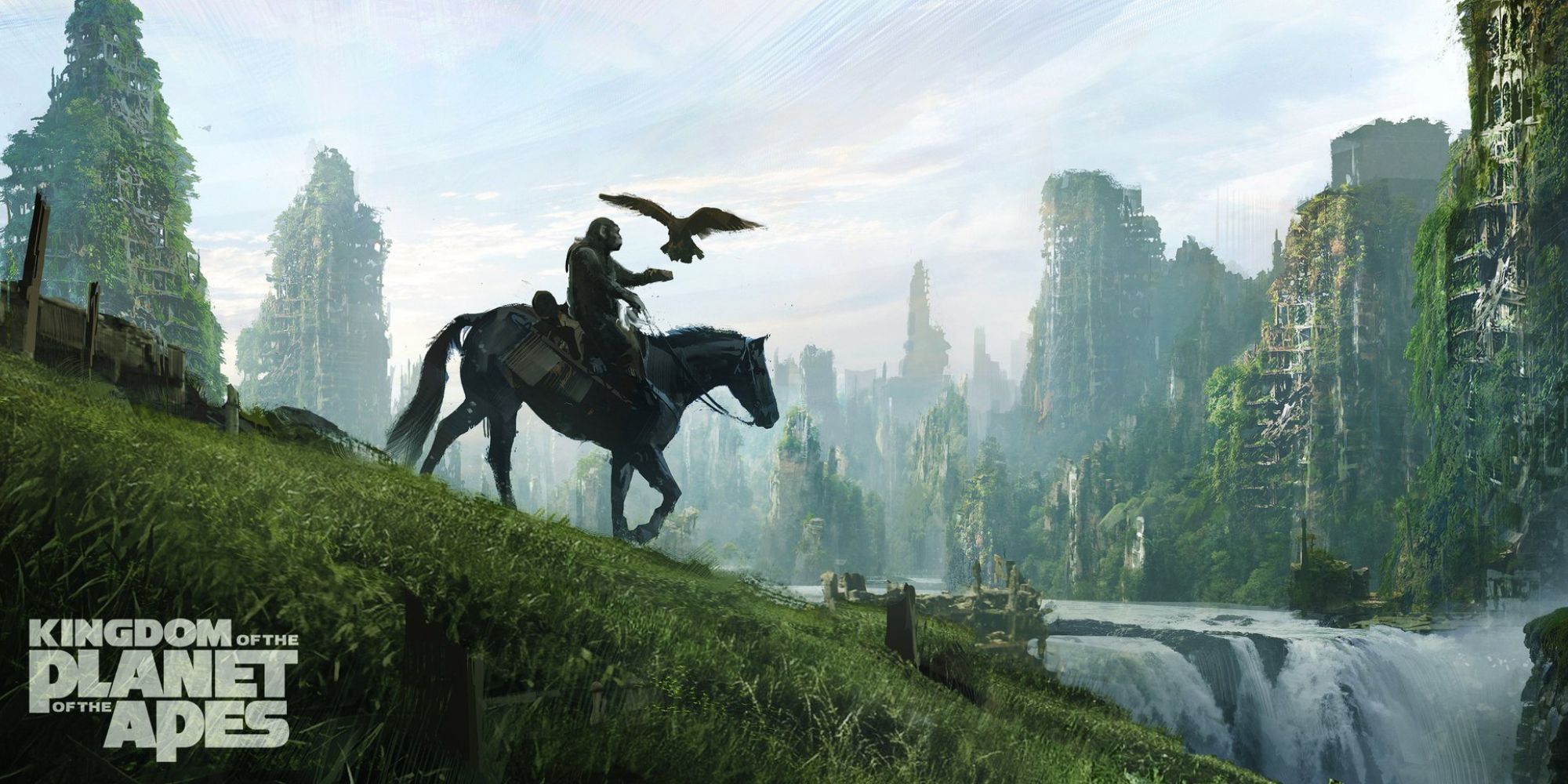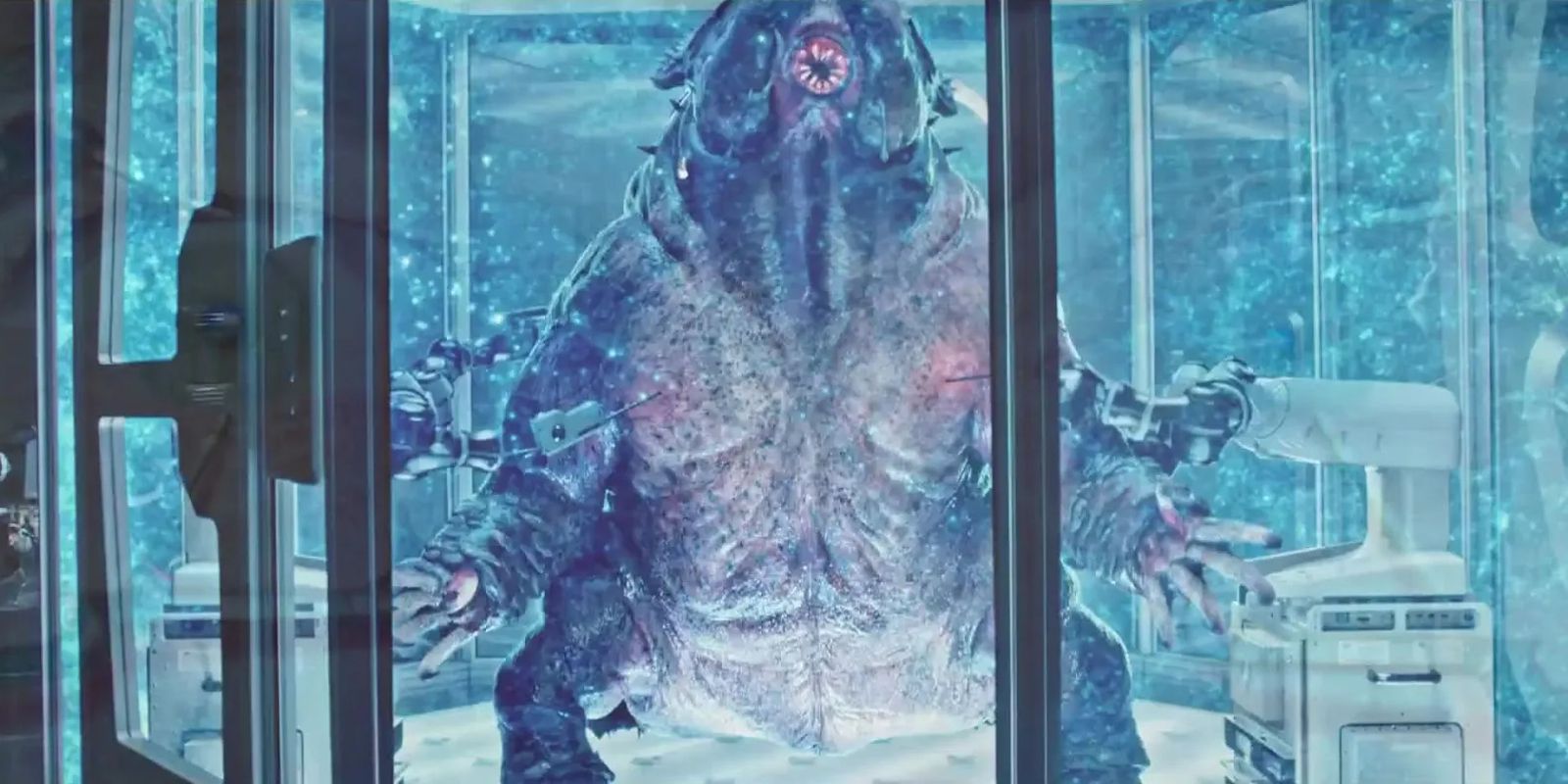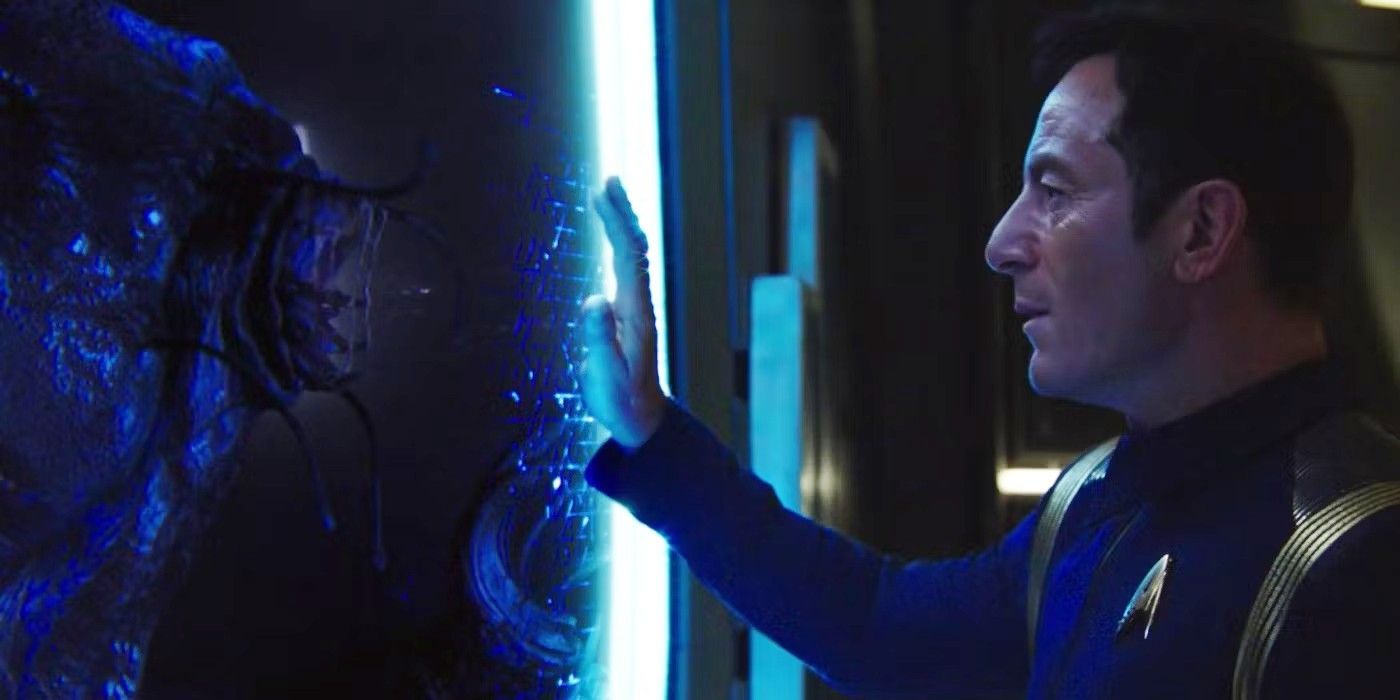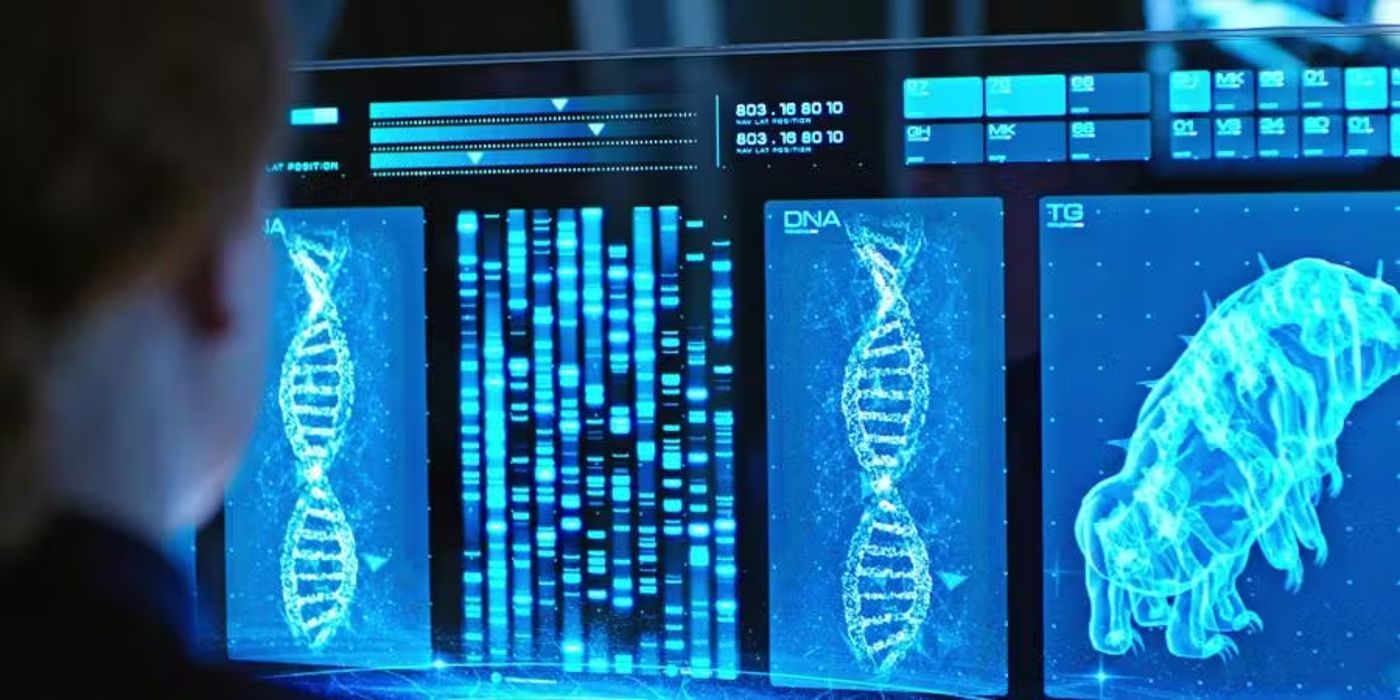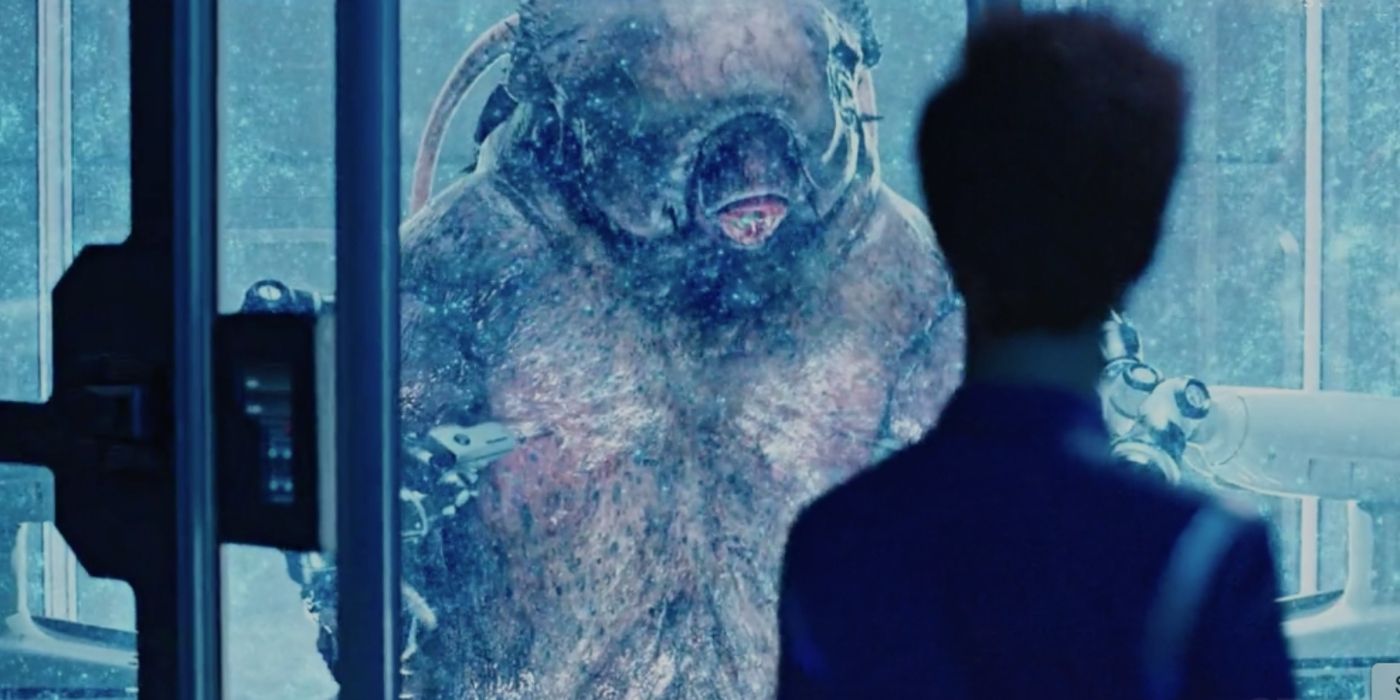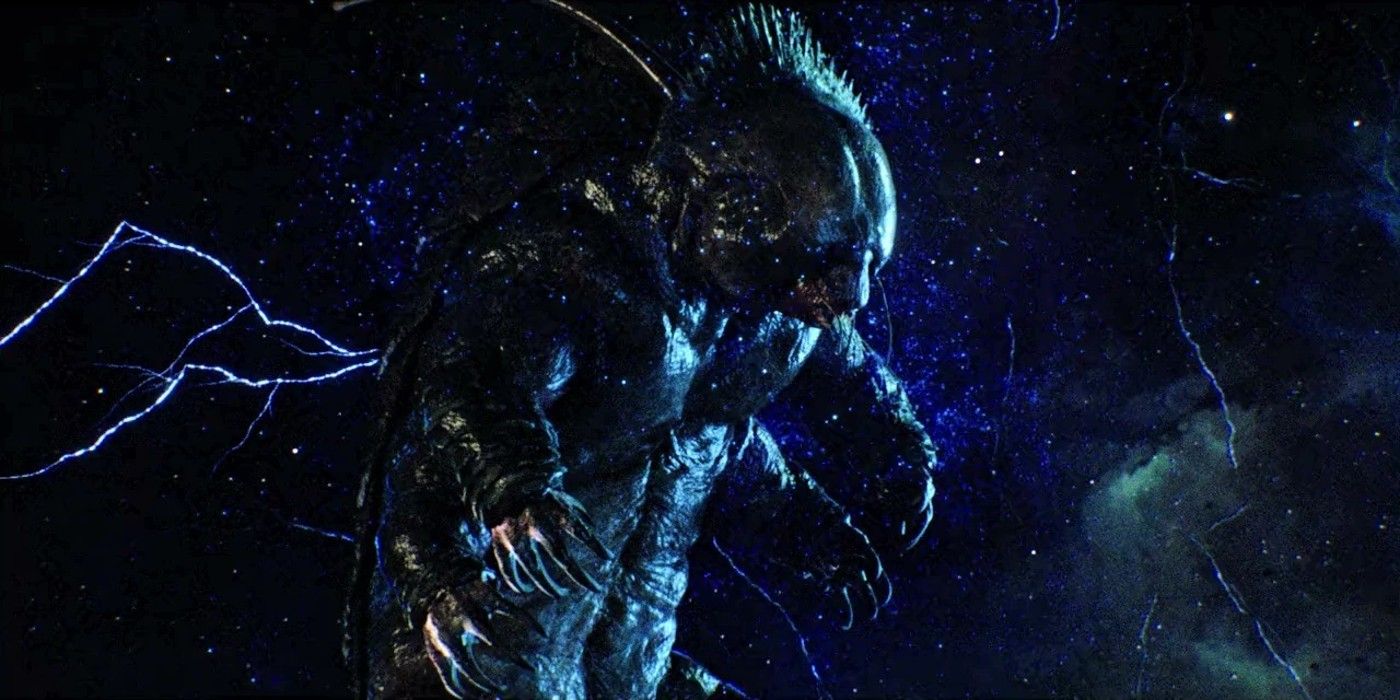Star Trek: Discovery is unique within the franchise for many reasons, and one of the most important is its ship. The USS Discovery is powered by a system unlike anything else in Starfleet: a displacement-activated spore hub drive. It's an incredibly complex concept, but in an attempt to put it simply, the ship uses fungal spores to travel through a network of mycelium (essentially, mushroom roots) through a discrete level of subspace. This allows the ship to jump from place to place in minutes.
But at the time Michael Burnham joins the crew, the Discovery hasn't been able to jump long distances yet. Because the network is so vast and complex, traveling even a short distance requires massive calculations. The longer the jump, the more potential routes, and the higher the likelihood of ending up at the wrong coordinates. For a longer jump, they would require computational power that they simply don't have. With the Klingon-Federation War taking lives every day, the pressure is on for Discovery to find a solution. And when disaster strikes a fellow Starfleet ship, they find one, in the form of an unknown alien creature.
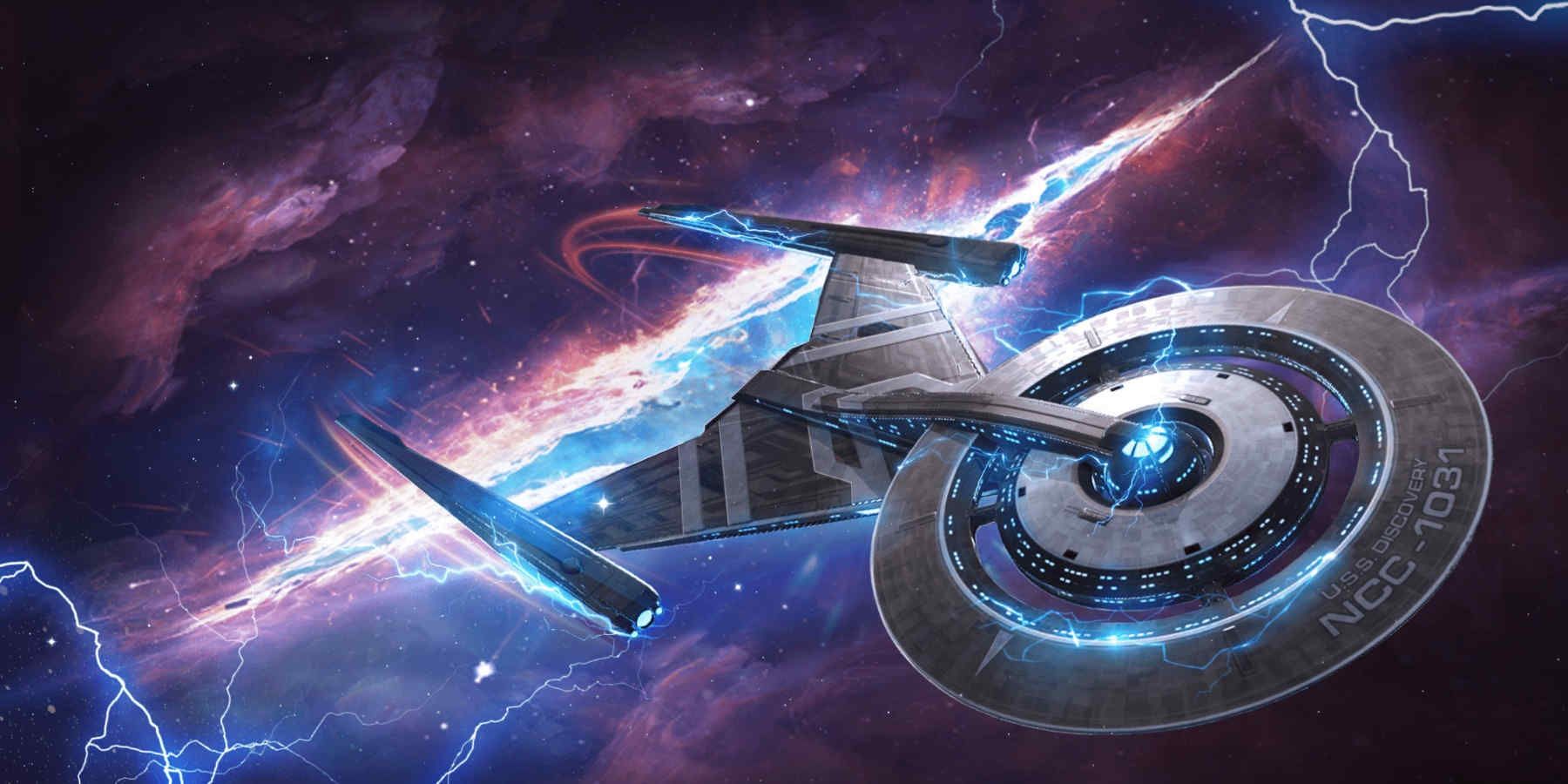
Star Trek: Discovery's Spore Drive, Explained
The spore drive was one of the most sophisticated pieces of technology introduced in Star Trek, but it was also a magnet for major galactic drama.
How Does the Discovery Find the Tardigrade?
In Season 1, Episode 3, "Context Is For Kings," series protagonist Michael Burnham arrives as a prisoner aboard the Discovery. Shortly afterward, the vessel receives horrifying news about its sister ship, the USS Glenn: the entire crew has died. In the exchange between engineer Paul Stamets and Captain Gabriel Lorca, it becomes clear that the Glenn was also a part of the mysterious project that's being conducted aboard the Discovery. A boarding party heads to the Glenn to retrieve equipment related to the project, to keep it out of Klingon hands.
What they find, though, is more than they bargained for. Although the crew clearly died in an accident (later revealed to be a spore drive malfunction), the ship also contains Klingon bodies that were killed by something else. Before long, the team finds the source of these deaths: a monstrous creature that appears to be immune to phaser fire and can easily tear a Klingon in half. Despite the chaos, they manage to secure the life form along with the rest of the science equipment, and get everything back to the Discovery.
What Is The Tardigrade?
As a xenoanthropologist, Michael is an expert on alien cultures and behaviors, so Captain Lorca enlists her help to learn about the creature. She learns that it bears similarities to Earth's tardigrades, tiny creatures that are among the most resilient on the planet. Not only does the creature physically resemble one, but it also shares its resistances to high and low temperatures, starvation, dehydration, and other extreme conditions. The only difference is that Earth's tardigrades are barely visible to the naked eye, while the one found onboard the Glenn is massive.
Despite the discrepancy in size, the name "tardigrade" catches on. Some of the crew members refer to it as "Ripper," a name derived from the brutal way it killed the Klingon raiders. Yet despite its capacity to hurt humanoids, Michael deduces that the creature is not malicious; rather, it attacked because it felt threatened. They may not be able to use it as a weapon (which is what Lorca wants), but there's more to be learned.
How Does the Tardigrade Help The Spore Drive Work?
In S1 E4, Captain Lorca learns that a Federation mining colony is under attack by Klingons. If they take it, not only will hundreds of innocents die, but precious resources will fall into enemy hands, practically ensuring that the Klingons will win the war. The Discovery's spore drive is the only chance any Federation ship has of getting there before the colony falls.
But the jump is longer than any they have tried before. The Glenn had managed to make those jumps, and so Stamets tries to figure out how to get the Discovery to do the same. After a failed jump, he claims they would need a supercomputer to make it successful.
When the spore drive was activated for that failed jump, though, Michael noticed an intense reaction from the tardigrade. From there, she follows the clues to learn that the tardigrade has a symbiotic relationship with the mycelial network. Based on the data from the Glenn, she and Stamets piece together that the tardigrade appeared on the ship by traveling the network. It appeared in the ship's storage, where the Glenn's mushrooms were kept; they conclude that it had come in search of the spores. Michael hypothesizes that the tardigrade may be the "supercomputer" that Stamets is looking for:
This ship's spore drive travels on a network of mycelium that's spread across the entire galaxy. We just can't control where we go. Maybe the tardigrade can.
Stamets works out the salvaged technology from the Glenn, and hooks the tardigrade up to the system. The Glenn's mapping patterns, which were incomplete before, are now fully detailed. The tardigrade was the key to it all, as Stamets realizes:
This is every charted star system. The tardigrade is holding all these coordinates in its head.
The Discovery jumps right into battle with the Klingons, destroying the ships and saving the remaining lives down on the mining colony. But as they make a successful jump, and another one once the battle is over, Michael watches as the tardigrade wails and thrashes. From the deep concern on her face, it's clear she understands that the animal is in deep distress. The day has been won, but now there's a moral question over using the creature to work the spore drive.
What Happens To The Tardigrade?
In the following episode, "Choose Your Pain," Michael proves that the jumps are hurting the tardigrade. After being forced to make one too many jumps, the creature enters a hibernation mode triggered by extreme stress. And it couldn't have happened at a worse time — Captain Lorca has been captured, and the Discovery desperately needs a working spore drive to save him. Out of both concern for the tardigrade and their duty to their captain, Michael, Stamets, and Tilly begin working on a solution.
They begin by examining the tardigrade's DNA. The creature's symbiotic relationship with the spores allows it to incorporate the mushrooms' DNA into its own, creating their unique connection and allowing the tardigrade to navigate the mycelial network. Or, as Michael puts it:
When Ripper borrows DNA from the mycelium, he's granted an all-access travel pass.
The key component is that the tardigrade is alive and sentient; the spore drive needs a co-pilot that can think for itself. All they have to do is find a willing host, compatible with the tardigrade DNA sequence, and transfer it into them. The problem is that time is short, and this small team of scientists doesn't have the luxury of running dozens of experiments.
When push comes to shove and there's no other choice, Paul Stamets ends up injecting himself with the tardigrade DNA. He himself serves as the co-pilot for the spore drive, stepping into the role that the tardigrade had fulfilled. As a consenting participant, Stamets is ready and willing to make the jump, so that the Discovery no longer has to exploit an innocent creature. Naturally, Stamets' reckless experiment results in some unexpected side effects — but those would be explored in later episodes. For now, Lorca is rescued, and the Discovery flies another day.
Meanwhile, the tardigrade is still in hibernation mode. Michael knows that even with Stamets able to fly the ship, their monstrous friend won't get a reprieve if it remains with Starfleet. So together, Michael and Tilly revive it with the mushroom spores it likes so much, and release it into space. As the spores surround it, the tardigrade awakes from its hibernation, appearing to flourish as Tilly and Michael watch from the ship. They are not able to communicate with the creature, to explain their situation, to thank it for its help or to apologize for hurting it. All they can do is set it free, and so that's the choice they make. Michael chooses to treat the tardigrade with humanity, a rare and precious thing in a time of war.
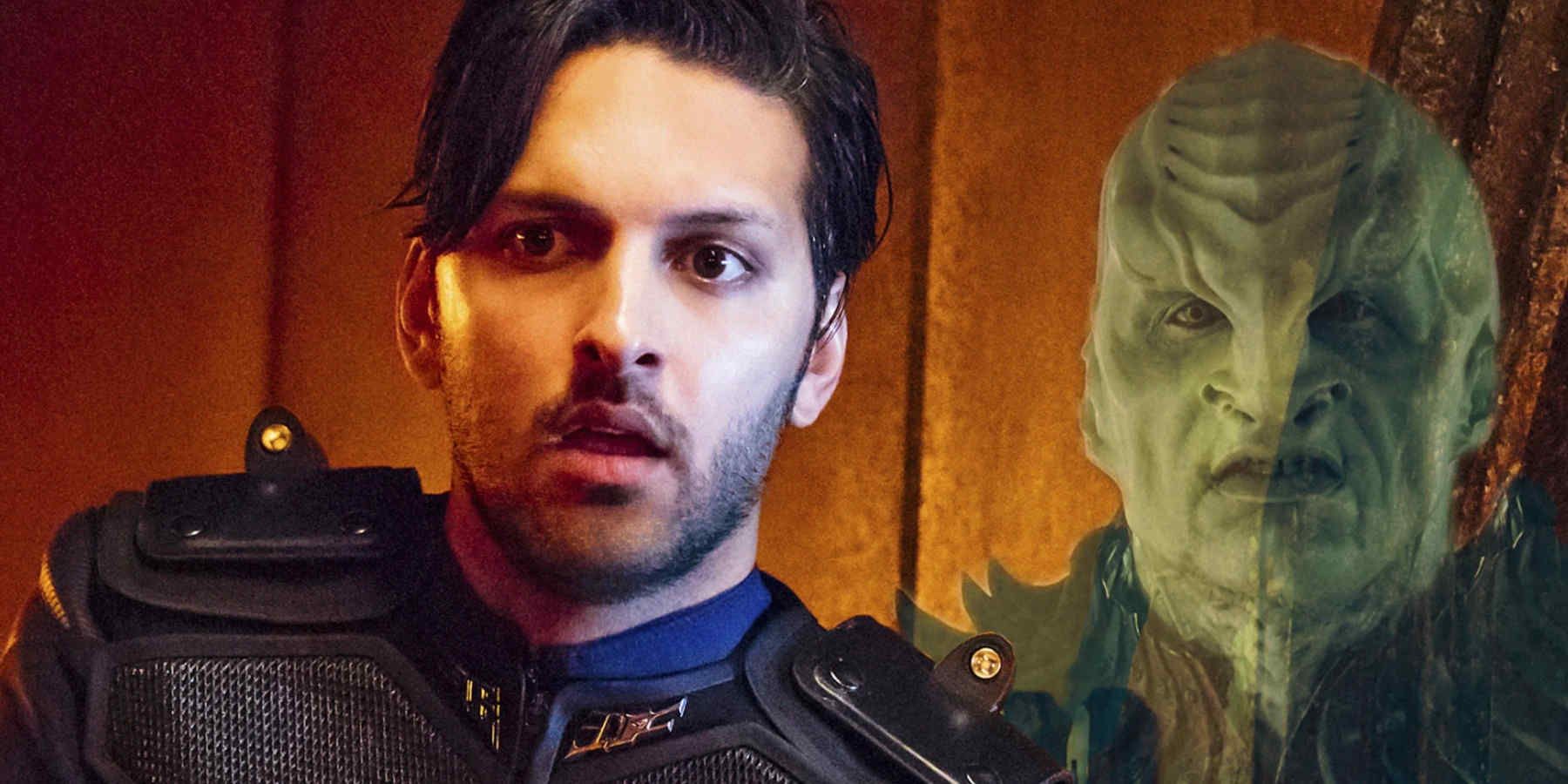
Star Trek: Discovery - Who Is Ash Tyler/Voq?
Ash Tyler started off like any Starfleet officer, then Star Trek revealed there was something much more sinister brewing beneath his normal facade.


